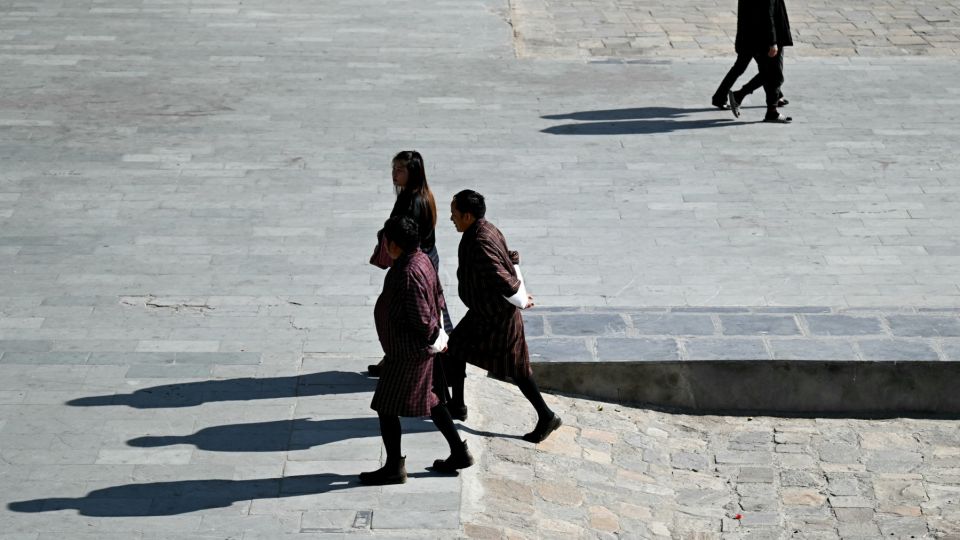July 2, 2025
THIMPHU – The World Bank’s latest report “Bhutan Poverty and Equity Assessment” reveals a stark picture of the nation’s poverty landscape: while wage and salary employment remains the clearest path out of poverty, most rural Bhutanese continue to depend on low-productivity agriculture.
In 2022, the poverty rate among agricultural workers stood at 18.5 percent compared to 11.5 percent among those relying on wages and salaries. Despite this, 64 percent of the rural population still depends on agriculture. This reflects how deeply rooted low-productivity employment remains in the country’s economic landscape.
Job creation remains sluggish. Net job creation per firm declined from 0.5 workers in 2019 to 0.3 in 2021. Overall unemployment has climbed to 5.9 percent but this figure obscures deeper inequalities. Female unemployment is nearly double that of men, at 7.9 percent compared with 4.4 percent. Youth unemployment has soared to 28.6 percent. Urban unemployment sits at 10.4 percent, far exceeding rural levels (3.4 percent).
The report points to a growing disconnect between education and employment. Young Bhutanese, particularly those with higher secondary or university degrees, face the steepest hurdles. Over 43 percent of jobseekers cite lack of skills and experience as their biggest barrier to employment.
Female participation in the labour market has also been erratic. Despite modest gains between 2018 and 2021, female employment plummeted in 2022. The report highlights entrenched gender roles, with women shouldering 71 percent of unpaid care and household work. This, combined with inadequate maternity allowances and childcare support, has led to higher attrition among female employees.
The report found that female salaried workers are paid 26 percent less than men on average—even though they work slightly longer hours.
The urban labour market is also under pressure from the country’s rapid urbanisation. Each year, around 18,000 people move to urban areas, which is about 2 percent of the total population. However, the urban economy is not generating jobs fast enough to absorb this influx.
As rural-to-urban migrants are mostly young and seeking employment or education, the mismatch between demand and supply in urban jobs is fuelling higher unemployment and frustration.
This lack of opportunity is pushing many Bhutanese to explore opportunities overseas. Around 70 percent of registered jobseekers are actively seeking employment abroad. In late 2022 and early 2023 alone, more than 5,000 Bhutanese emigrated via Paro International Airport.
Most Bhutanese emigrants are highly educated, with over half holding a bachelor’s degree. Many cite the lack of quality jobs and educational options at home as the key drivers of emigration.
A rapid survey conducted in mid-2024 reveals that both current and aspiring migrants overwhelmingly prefer Australia as a destination. Among emigrants, 49.2 percent moved for better opportunities, while aspiring migrants cite unsuitable study or job options in Bhutan as their main reasons.
Many expect better salaries, better quality education, and more career progression opportunities abroad. Although over half send remittances home, about 36 percent of their families are considering relocating to the host countries, further intensifying Bhutan’s brain drain.
According to the World Bank report, improvements in Bhutan’s Job Quality Index slowed in 2022. Rural jobs showed higher stability, but long hours and low satisfaction brought down overall quality scores.
As a result, the unemployed continue to prefer public sector jobs, which are seen as more stable and satisfying. However, the private sector remains underdeveloped and unattractive to many jobseekers, especially youth.
Policy directions and recommendations
To reverse these trends, the World Bank recommends a dual-track approach: targeted interventions in promising, job-rich sectors, coupled with broad-based reforms to raise productivity across the economy.
The report urges improving access to finance, mentorship, and supply chains for small businesses, strengthening the investment climate, and reforming state-owned enterprises. Labour market reforms are recommended to promote flexible labour regulations, improve worker mobility, and enhance firms’ access to talent through a functional labour market information system (LMIS).
Rural workers require comprehensive support packages, including technical training, market access, risk management, and climate adaptation programs delivered through coordinated government services.
For female workers, the report recommends expanding active labour market programmes to include awareness campaigns, group training on female empowerment, and childcare subsidies for low-income families. Strengthening early childhood care systems would also help reduce the attrition of women in the workforce and encourage their long-term participation.
To address youth and urban unemployment, the report outlines efforts to strengthen employment services. These include reorienting technical and vocational education to align with private sector needs, boosting the capacity of employment service centres to work with local employers, and implementing job placement and mobility support for low-skilled workers. The LMIS should be enhanced to reduce data gaps and better align skills supply with labour market demands.
The report stresses the need to build human capital by raising education quality, especially in rural areas, and boosting the competitiveness of Bhutanese higher education to match international standards. Encouraging students to work while studying could also improve domestic retention of young talent, states the report.


